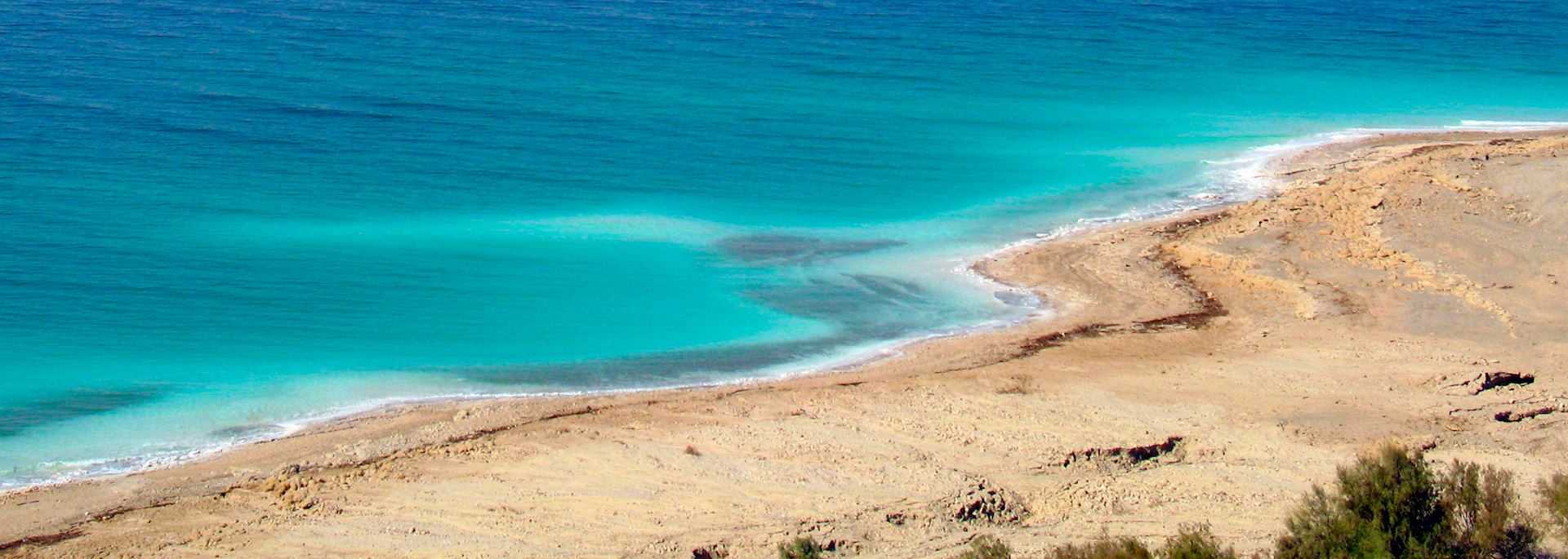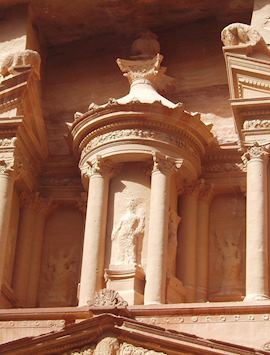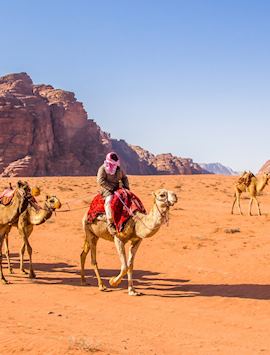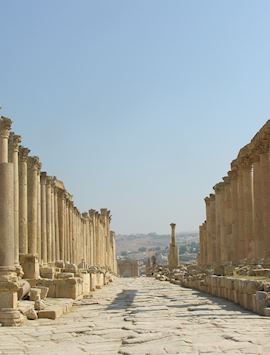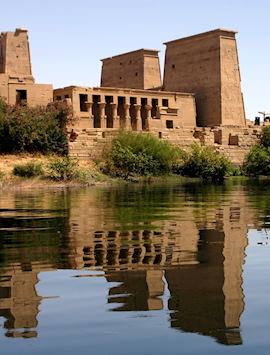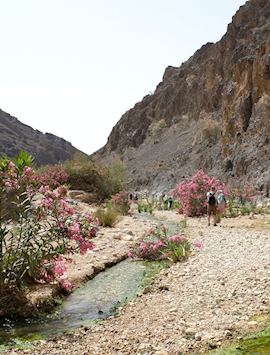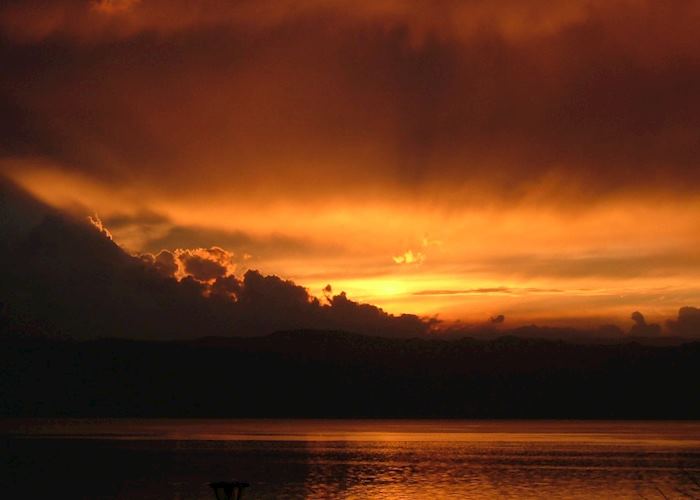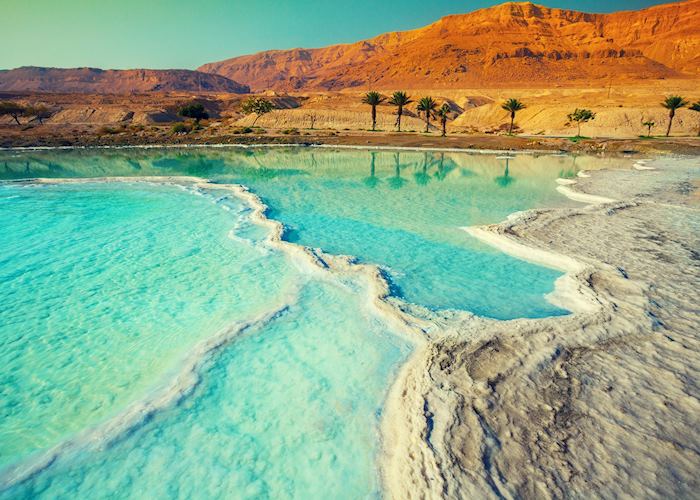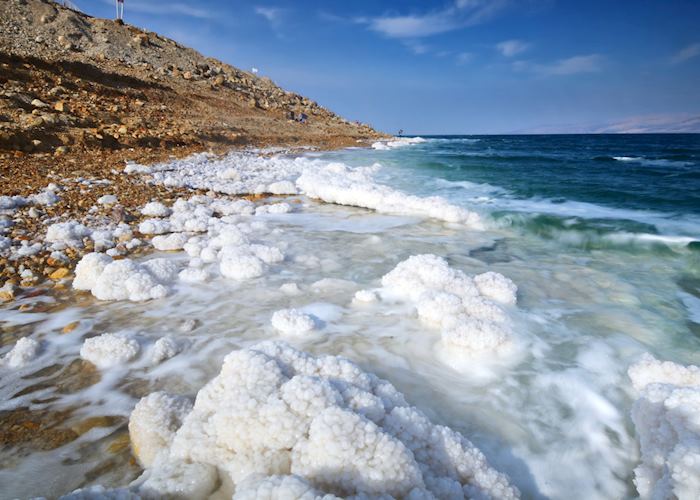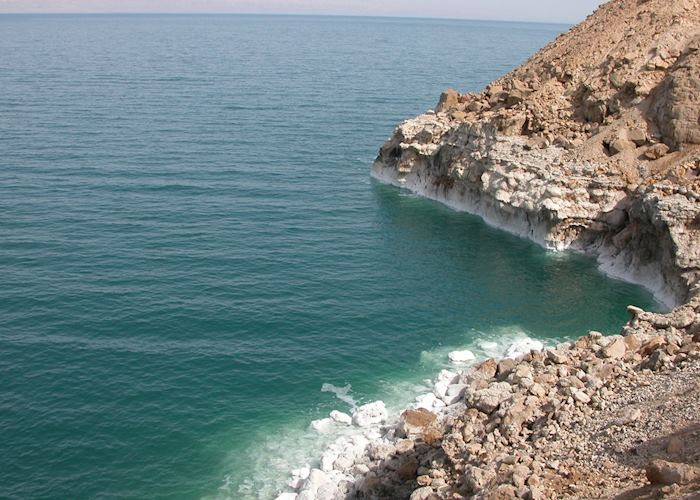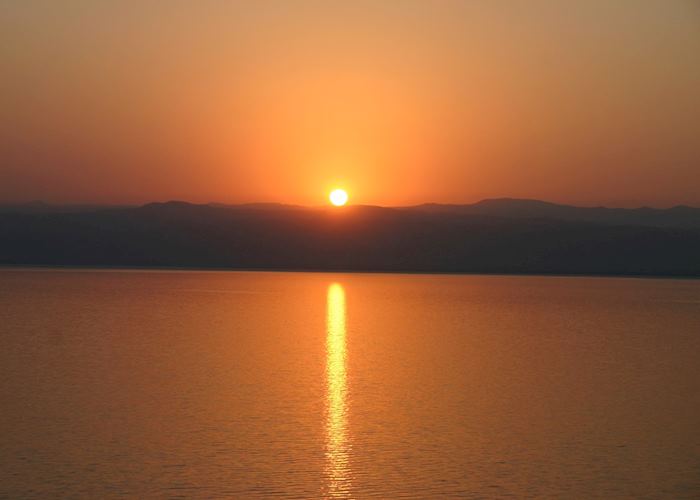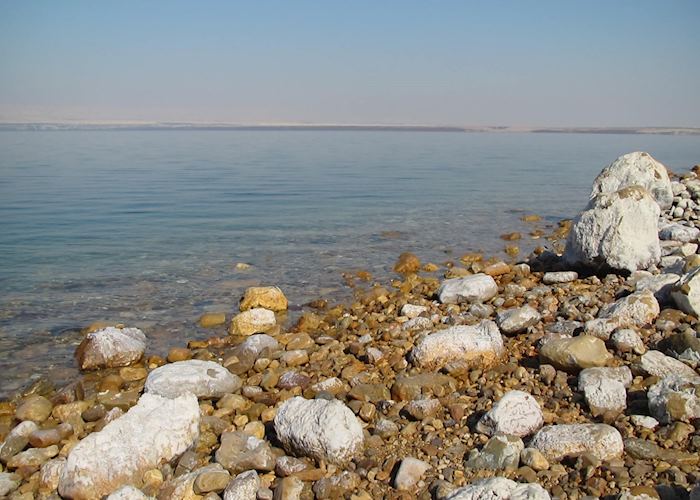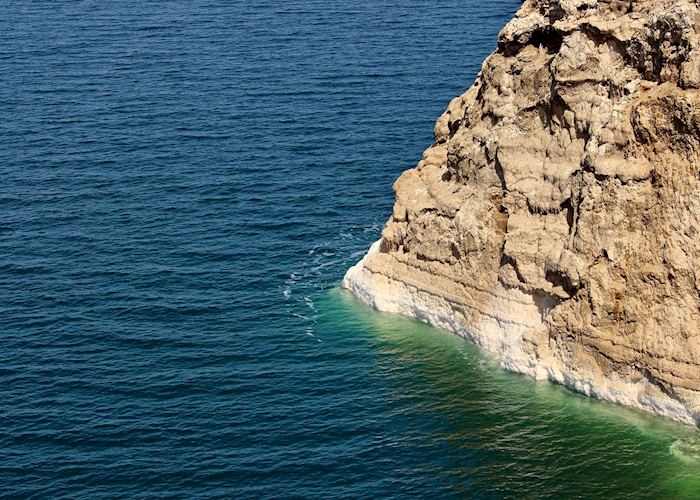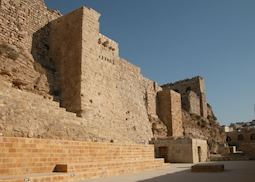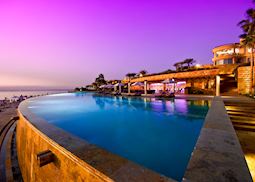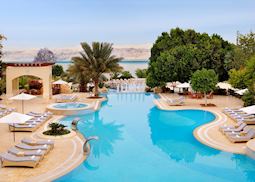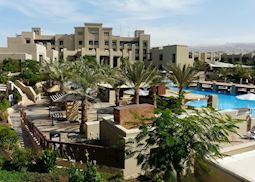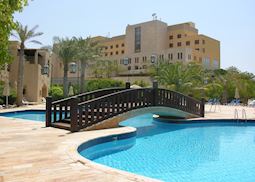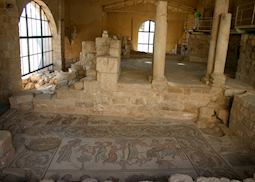Jump to:
At the Dead Sea, salt, water and a quirk of topography combine to create a stark and striking landscape on the western border of Jordan. Intensely salty, the startlingly blue waters have attracted visitors since ancient times thanks to the reputed healing powers of its waters — this has been a healing resort since before Cleopatra slathered herself in mud from the seabed.
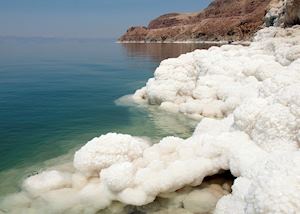 The Dead Sea is the lowest point on dry land, about 430 m (1,412 ft) below sea level. That depressed elevation gives the sea (which is actually a lake) many of its extraordinary characteristics. Water flows down into the lake carrying a molecular burden of salts. The collected water, with nowhere else to go, evaporates in the sun, leaving behind an ever-more saline solution. In fact, it’s one of the saltiest bodies of water on the planet.
The Dead Sea is the lowest point on dry land, about 430 m (1,412 ft) below sea level. That depressed elevation gives the sea (which is actually a lake) many of its extraordinary characteristics. Water flows down into the lake carrying a molecular burden of salts. The collected water, with nowhere else to go, evaporates in the sun, leaving behind an ever-more saline solution. In fact, it’s one of the saltiest bodies of water on the planet.
Because it’s so dense with dissolved salt, the lake is exceptionally buoyant — even a bowling ball floats. Swimming here will give you a weightless sensation that’s unlike anywhere else. You lay right on top of the water, unable to submerge, and push through the thick, almost oily liquid, which feels dense and slick against your skin.
If, like most visitors, you give in to the temptation to taste it, you’ll find it painfully bitter — it almost burns your mouth. It will burn your eyes if you put your head under, so be sure not to. Most entry points have fresh-water showers to rinse any accidental splashes off your face.
The Dead Sea’s name comes from the fact that the water is so salty that almost nothing can live here. The highly concentrated salt also crystallises into strange formations — you’ll see jagged stands of spiked crystals encrusting rocks as well as weirdly organic lumps growing from the water. This salt, which also permeates the slick grey mud that you can find in some places at the lake floor, is thought to cure everything from psoriasis to wrinkles. You can buy beauty products to take home at many of the hotels and spas as well as in Amman.
The area around the Dead Sea has other unique properties, too. Because it’s so low, the extra atmosphere filters out more of the sun’s harmful rays, making it harder to get sunburned — but not impossible, please do be careful. Additionally, oxygen levels are 15% higher than in most other parts of the world — as a result, you may simply feel happier when you visit.
Most of the hotels and spas that line the lake’s shore have a private beach so that guests can partake of the waters, with facilities for beauty treatments to take advantage of the bounty of salt. They also offer fresh-water pools, if you prefer to swim without getting coated in salt.
The Dead Sea is just a 45-minute drive from the airport in Amman, so it’s a good place to relax at the end of a trip or to stop for a night after you visit Petra. It’s also a convenient base if you want to explore the nearby Wadi Mujib Nature Preserve as a part of a tour exploring the country’s unique ecosystems through Jordan’s many nature parks.
For active visitors, one of the most impressive hikes at Wadi Mujib is the Siq trail — you can follow up a small and relatively shallow river through a vast crevasse in the sandstone cliffs. As you splash through the cool water you might see silvery, finger-length Dead Sea toothcarp darting around your legs. At the end of the trail, you’ll find a small waterfall splashing into a pool and you can stand under the falling water and let it spill over your head.
If you’d like to visit the Dead Sea, you may want to do so sooner rather than later. The Jordan River was diverted away years ago and the surface of the lake is rapidly shrinking at a rate of about 1 m (3 feet) each year.
Best time to visit the Dead Sea
The Dead Sea, thanks to its lower elevation, is usually the hottest and most humid part of Jordan. We suggest visiting in the spring (March to May) or autumn (October and November), to avoid the worst of the heat. December to February is much cooler and you may experience some rain, making it unpleasant to swim. For this reason, winter months draw fewer visitors.
who's been there
-
01993 838 92501993 838 415
- Make an enquiry
Suggested itineraries featuring the Dead Sea
Our itineraries will give you suggestions for what is possible when you travel in the Dead Sea, and they showcase routes we know work particularly well. Treat them as inspiration, because your trip will be created uniquely by one of our specialists.
Places near the Dead Sea
- Mount Nebo 13 miles away
- Madaba 16 miles away
- Amman 30 miles away
- Kerak 35 miles away
- Jerash & The Decapolis 48 miles away
- Dana Biosphere Reserve 69 miles away
- Little Petra & Aaron's Tomb 89 miles away
- Petra 93 miles away
- Wadi Rum 147 miles away
- Aqaba 151 miles away
Photos of the Dead Sea
Our expert guides to exploring the Dead Sea
Written by our specialists from their own experiences of visiting the Dead Sea, these guides will help you make the most of your time there. We share both our practical recommendations and the best ways to appreciate the Dead Sea at its best.
-
The King's Highway in Jordan ![Kerak Castle]()
The King's Highway in Jordan
The King's Highway in Jordan
Travelling the King's Highway in Jordan means seeing 5,000 years of history. Visit sites of the Holy Land, the churches at Madaba and Mount Nebo, the castles of Kerak and Shawbak, as well as the ancient city of Petra.
Read this guide
Accommodation choices for the Dead Sea
We've selected a range of accommodation options for when you visit the Dead Sea. Our choices usually come recommended for their character, facilities and service or location. Our specialists always aim to suggest properties that match your preferences.
-
![Kempinski Ishtar Dead Sea, The Dead Sea]()
Kempinski Hotel Ishtar Dead Sea
Dead Sea -
![Dead Sea Marriott Resort & Spa, The Dead Sea]()
Dead Sea Marriott Resort & Spa
Dead Sea -
![Holiday Inn, The Dead Sea]()
Holiday Inn Dead Sea
Dead Sea -
![The Mövenpick Resort & Spa, Dead Sea]()
The Mövenpick Dead Sea Resort
Dead Sea
Ideas for experiencing the Dead Sea
Our specialists seek out authentic ways to get to know the places that could feature in your trip. These activities reflect some of the experiences they've most enjoyed while visiting the Dead Sea, and which use the best local guides.
-
Madaba, Mount Nebo & Kerak Castle ![Mosaic, Madaba Archaeological Park]()
Madaba, Mount Nebo & Kerak Castle
Madaba, Mount Nebo & Kerak Castle
Mount Nebo is the site from which Moses first saw the Holy Land at the end of the Exodus. It is also the presumed site of his death and burial.
View details
